
通常,队列遵循先进先出(FIFO)的原则,但是PriorityQueue 按照优先级的方式访问元素时,遵循一种基于优先级的方法。队列的每个元素 具有与之关联的优先级。元素根据自然排序进行优先排序 order. However, we can provide custom orders using a comparator. The elements of PriorityQueue are not actually sorted, they are only retrieved in sorted order. This feature allows us to modify an element of PriorityQueue easily.
Java Program to modify an element of a ProrityQueue
在开始程序之前,让我们先了解一下PriorityQueue的几个内置方法 -
add() − It is used to add a single element to the queue
offer() − 它还将给定的元素插入到队列中。
peek() − 用于检索队列的第一个元素。
remove() − It is used to remove the specified element from the queue.
Approach 1
定义一个PriorityQueue集合的对象,并使用'add()'方法存储一些元素
method.
Now, using ‘peek()’ method show the first element of queue and then remove this 使用 'remove()' 方法从队列中移除元素
进一步移动,使用内置方法在相同位置插入一个新元素
‘offer()’.
Again show the modified first element.
Example
的中文翻译为:示例
In the following example, we will modify an element of PriorityQueue. The elements are
没有比较器的优先级,这意味着它们将按升序访问。
import java.util.*;
public class Modify {
public static void main(String[] args) {
PriorityQueue<Integer> queuePq = new PriorityQueue<>();
// inserting elements
queuePq.add(7);
queuePq.add(9);
queuePq.add(2);
queuePq.add(4);
queuePq.add(3);
System.out.println("Original Queue: " + queuePq);
int head1 = queuePq.peek(); // accessing first element
System.out.println("The first element in Queue: " + head1);
queuePq.remove(2); // removing first element
queuePq.offer(1); // adding new element at first position
int head2 = queuePq.peek(); // accessing first element
System.out.println("The updated first element in Queue: " + head2);
queuePq.offer(2); // adding new element at first position
System.out.println("Newly updated Queue: " + queuePq);
}
}
输出
Original Queue: [2, 3, 7, 9, 4] The first element in Queue: 2 The updated first element in Queue: 1 Newly updated Queue: [1, 3, 2, 9, 4, 7]
方法二
使用一个名为的内置方法定义一个PriorityQueue集合的对象 ‘Collections.reverseOrder()’用于将元素按降序存储。
现在,按照前面示例中描述的相同步骤进行。
Example
的中文翻译为:示例
In the following example, we will modify an element of PriorityQueue. The elements are 使用比较器进行优先排序,以便按降序提供访问。
import java.util.*;
public class Modify {
public static void main(String[] args) {
PriorityQueue<Integer> queuePq = new
PriorityQueue<>(Collections.reverseOrder());
// inserting elements
queuePq.add(7);
queuePq.add(9);
queuePq.add(2);
queuePq.add(1);
queuePq.add(3);
System.out.println("Original Queue: " + queuePq);
int head1 = queuePq.peek(); // accessing first element
System.out.println("The first element in Queue: " + head1);
queuePq.remove(9); // removing first element
queuePq.offer(8); // adding new element at first position
int head2 = queuePq.peek(); // accessing first element
System.out.println("The updated first element in Queue: " + head2);
queuePq.offer(9); // adding new element at first position
System.out.println("Newly updated Queue: " + queuePq);
}
}
输出
Original Queue: [9, 7, 2, 1, 3] The first element in Queue: 9 The updated first element in Queue: 8 Newly updated Queue: [9, 7, 8, 1, 3, 2]
结论
我们通过定义Java Collection Framework的PriorityQueue类来开始本文 实现Queue接口的内容。在下一节中,我们将讨论一些内置的内容 在给定的PriorityQueue中修改元素的Java程序中使用的方法
以上是我如何在Java中修改PriorityQueue的元素?的详细内容。更多信息请关注PHP中文网其他相关文章!
 C++程序:向数组中添加一个元素Aug 25, 2023 pm 10:29 PM
C++程序:向数组中添加一个元素Aug 25, 2023 pm 10:29 PM数组是一种线性顺序数据结构,用于在连续的内存位置中保存同质数据。与其他数据结构一样,数组也必须具备以某种有效方式插入、删除、遍历和更新元素的功能。在C++中,我们的数组是静态的。C++中还提供了一些动态数组结构。对于静态数组,该数组内可能存储Z个元素。到目前为止,我们已经有n个元素了。在本文中,我们将了解如何在C++中在数组末尾插入元素(也称为追加元素)。通过示例理解概念‘this’关键字的使用方式如下GivenarrayA=[10,14,65,85,96,12,35,74,69]Afterin
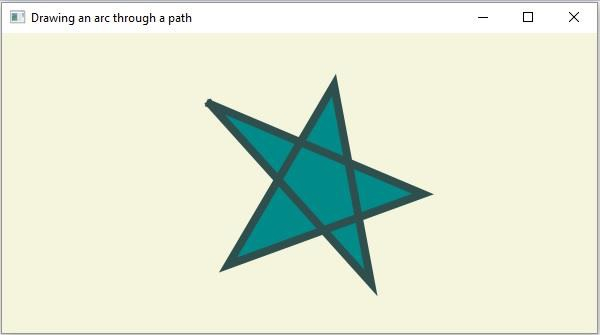 在JavaFX中,有哪些不同的路径元素?Aug 28, 2023 pm 12:53 PM
在JavaFX中,有哪些不同的路径元素?Aug 28, 2023 pm 12:53 PMjavafx.scene.shape包提供了一些类,您可以使用它们绘制各种2D形状,但这些只是原始形状,如直线、圆形、多边形和椭圆形等等...因此,如果您想绘制复杂的自定义形状,您需要使用Path类。Path类Path类使用此表示形状的几何轮廓您可以绘制自定义路径。为了绘制自定义路径,JavaFX提供了各种路径元素,所有这些都可以作为javafx.scene.shape包中的类使用。LineTo-该类表示路径元素line。它可以帮助您从当前坐标到指定(新)坐标绘制一条直线。HlineTo-这是表
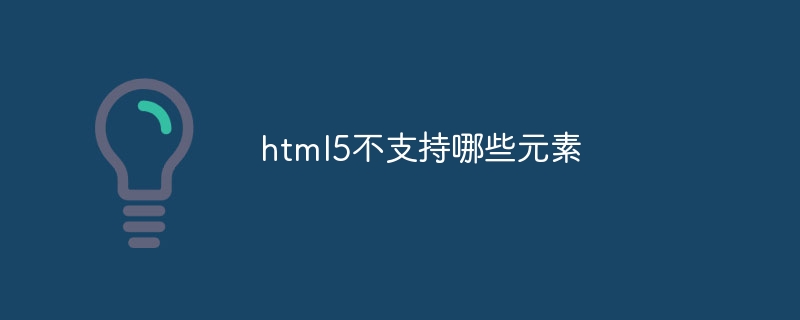 html5不支持哪些元素Aug 11, 2023 pm 01:25 PM
html5不支持哪些元素Aug 11, 2023 pm 01:25 PMhtml5不支持的元素有纯表现性元素、基于框架的元素、应用程序元素、可替换元素和旧的表单元素。详细介绍:1、纯表现性的元素,如font、center、s、u等,这些元素通常被用于控制文本样式和布局;2、基于框架的元素,如frame、frameset和noframes,这些元素在过去用于创建网页布局和分割窗口;3、应用程序相关的元素,如applet和isinde等等。
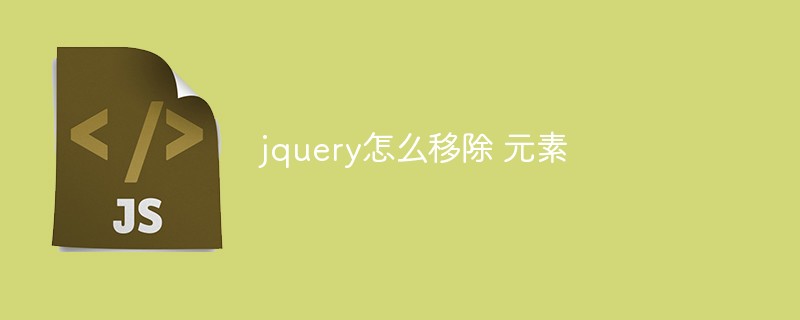 jquery怎么移除 元素Feb 17, 2023 am 09:49 AM
jquery怎么移除 元素Feb 17, 2023 am 09:49 AMjquery移除元素的方法:1、通过jQuery remove()方法删除被选元素及其子元素,语法是“$("#div1").remove();”;2、通过jQuery empty()方法删除被选元素的子元素,语法是“$("#div1").empty();”。
 如何使用HTML和CSS实现一个具有固定导航菜单的布局Oct 26, 2023 am 11:02 AM
如何使用HTML和CSS实现一个具有固定导航菜单的布局Oct 26, 2023 am 11:02 AM如何使用HTML和CSS实现一个具有固定导航菜单的布局在现代网页设计中,固定导航菜单是常见的布局之一。它可以使导航菜单始终保持在页面顶部或侧边,使用户可以方便地浏览网页内容。本文将介绍如何使用HTML和CSS实现一个具有固定导航菜单的布局,并提供具体的代码示例。首先,需要创建一个HTML结构来呈现网页的内容和导航菜单。以下是一个简单的示例
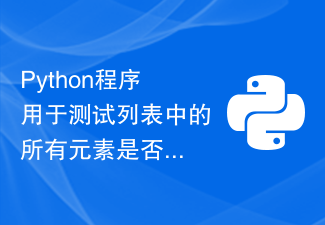 Python程序用于测试列表中的所有元素是否最大间隔为KAug 28, 2023 pm 05:25 PM
Python程序用于测试列表中的所有元素是否最大间隔为KAug 28, 2023 pm 05:25 PM在许多编程场景中,我们都会遇到需要确定列表中的所有元素是否最多相距K个位置的情况。这个问题出现在各个领域,例如数据分析、序列处理和算法挑战。能够测试和验证这些条件对于确保我们程序的完整性和正确性至关重要。在本文中,我们将探索一个Python程序来有效地解决这个问题。我们将讨论这个概念,提出解决问题的分步方法,并提供工作代码实现。读完本文后,您将清楚地了解如何使用Python检查列表中的元素是否最多相距K个位置。理解问题在深入研究解决方案之前,让我们首先详细了解问题陈述。给定一个元素列表,我们需要
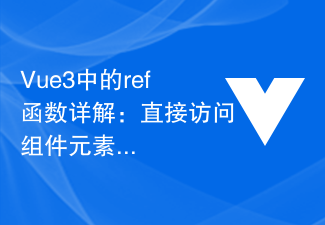 Vue3中的ref函数详解:直接访问组件元素的应用Jun 18, 2023 am 11:51 AM
Vue3中的ref函数详解:直接访问组件元素的应用Jun 18, 2023 am 11:51 AM在Vue3中,ref函数是非常有用的,在开发过程中提供了很方便的操作方式。它允许直接访问Vue组件元素并对其进行操作。ref函数是一个创建一个被响应式地绑定的对象的函数。可以在Vue组件中使用它来引用一个元素或子组件,并从父组件操作这些元素或子组件。ref函数返回一个响应式的对象,并通过该对象暴露指定元素或子组件的引用。因此,可以通过该对象直接访问元素或子组
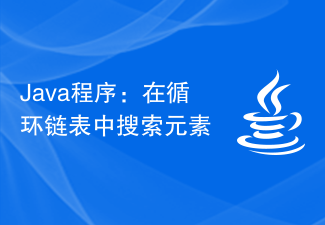 Java程序:在循环链表中搜索元素Sep 11, 2023 am 11:45 AM
Java程序:在循环链表中搜索元素Sep 11, 2023 am 11:45 AM什么是喜欢列表和循环链表?链表是一种数据结构,其中每个节点都包含两部分,数据和地址路径。这些部分指向下一个节点,该节点始终与先前的节点创建互连。基于此,循环链表是最后一个节点与第一个节点有内部链接,这就是这种类型的链表称为循环链表。在Java环境中,当我们查找元素循环链表时,需要在链表中创建一个临时节点来指向。这样我们还需要声明两个变量。它们是曲目索引和曲目搜索。如果Temp节点在起始点为空,那么遍历列表就很重要,因为此时它不包含任何项目。循环链表的工作原理及其应用?循环链表的工作方法对于循环链


热AI工具

Undresser.AI Undress
人工智能驱动的应用程序,用于创建逼真的裸体照片

AI Clothes Remover
用于从照片中去除衣服的在线人工智能工具。

Undress AI Tool
免费脱衣服图片

Clothoff.io
AI脱衣机

AI Hentai Generator
免费生成ai无尽的。

热门文章

热工具

SublimeText3 Mac版
神级代码编辑软件(SublimeText3)

PhpStorm Mac 版本
最新(2018.2.1 )专业的PHP集成开发工具

Atom编辑器mac版下载
最流行的的开源编辑器

mPDF
mPDF是一个PHP库,可以从UTF-8编码的HTML生成PDF文件。原作者Ian Back编写mPDF以从他的网站上“即时”输出PDF文件,并处理不同的语言。与原始脚本如HTML2FPDF相比,它的速度较慢,并且在使用Unicode字体时生成的文件较大,但支持CSS样式等,并进行了大量增强。支持几乎所有语言,包括RTL(阿拉伯语和希伯来语)和CJK(中日韩)。支持嵌套的块级元素(如P、DIV),

Dreamweaver Mac版
视觉化网页开发工具






